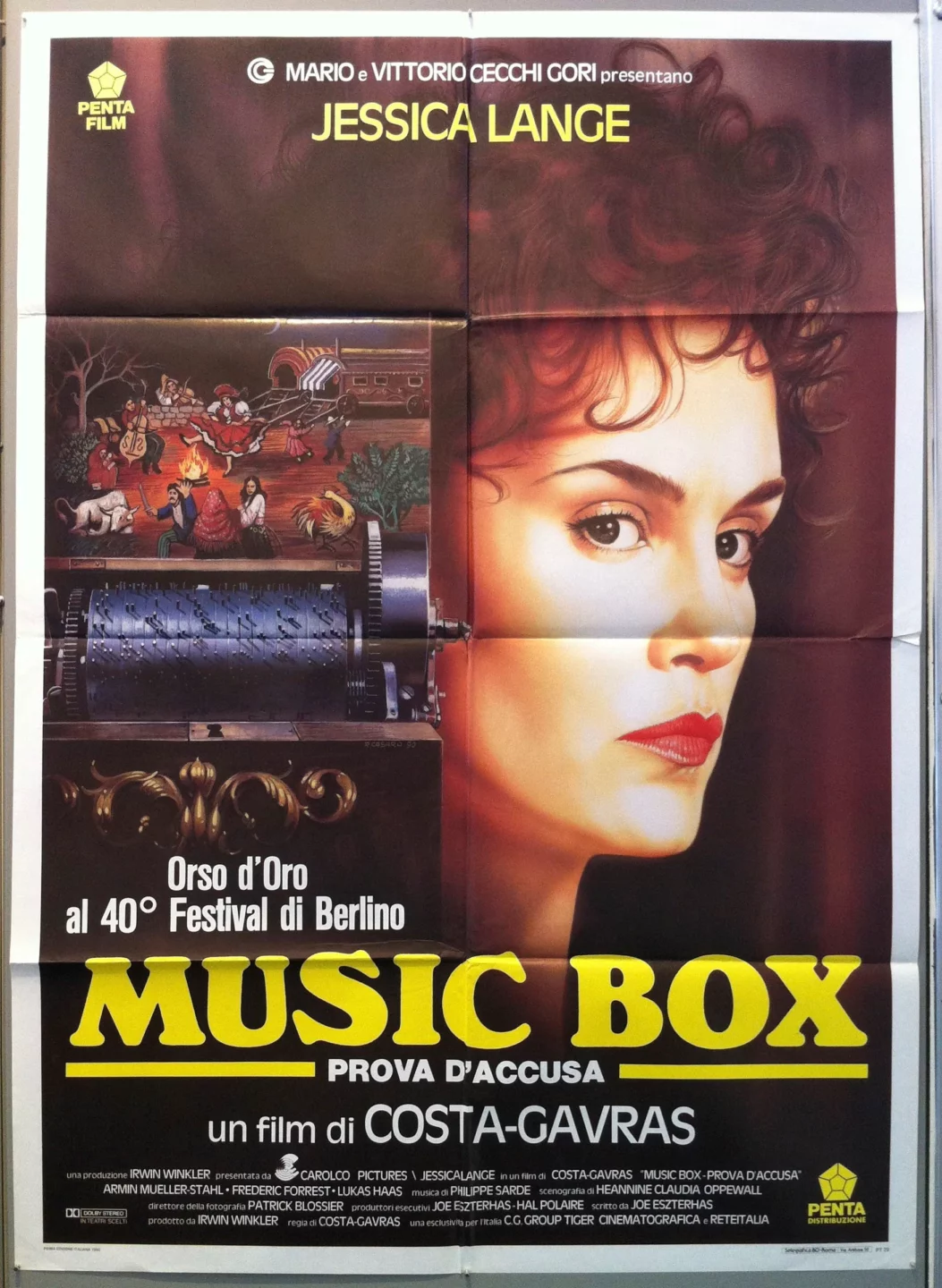The DECODER series — to which SEMIOVOX has invited our semiotician colleagues from around the world to contribute — explores fictional semiotician-esque action as depicted in books, movies, TV shows, etc.
Watching films on VHS was quite different to the possibility of immediate streaming gratification we have today. And at the end of the world in the early Nineties, having a VCR was quite a luxury — one that implied a whole ritual. In our house in suburban Buenos Aires, the ritual would begin with deciding that the family was going to watch a movie that night, which meant confirming everyone’s availability — because you could only rent the video for 24 hours. Once this was settled, you’d go to the Video Club and hope to find an available copy of a movie that everyone in our household would actually enjoy. Success on all fronts in this endeavor was quite rare. However, with Music Box, a 1989 film directed by Costa-Gavras and starring Jessica Lange and Armin Mueller-Stahl, we struck gold.
Legal-themed films with lawyers, detectives, and members of a jury were quite common, and fairly good, during that decade. So when the movie started out with a lovable Hungarian immigrant facing a trial — after having his US citizenship revoked, because he has been accused of WWII war crimes — and his daughter, a defense attorney, resolving to defend her father in court, we thought we knew what we were getting into. A case of mistaken identity! But then…. it gets much more complicated.
Ann Talbot (Lange’s character) wrestles with two roles: loving daughter who will do anything to defend her father, and a lawyer who really wants to learn whether her father was involved in the sadistic treatment of Hungarian Jews, Roma, and their protectors. Just like Talbot, we viewers aren’t sure what to believe; there are strong arguments on both sides of the court case.
One of the most brilliant aspects of the film is that Talbot gains insights into her father’s character from her child (Lukas Haas), who casually mentions some ideas his grandfather shares with him, as well as his love for extreme physical exercise (in particular, push-ups, ahem…). Each new clue twists and turns Talbot’s perspective… and ours too. Immersed in painful doubts, Talbot confronts her brother — a simpleton who won’t accept any doubts about their father— in her quest for the truth.
New testimonies and proofs keep appearing, and you can’t fully decide what to believe — from “Is he guilty?”, “He can’t be” and “He is not” to “Oh my god, maybe he is.” You feel the distress of the main character as your own. And although the work of a commercial semiotician is never anywhere nearly as morally fraught as this situation, we can recognize the struggle: How can we determine the truth, when the evidence is so contradictory? Wouldn’t it be easiest to settle on the most obvious interpretation? Or do we keep going?
DECODER: Adelina Vaca (Mexico) on ARRIVAL | William Liu (China) on A.I. ARTIFICIAL INTELLIGENCE | Tim Spencer (England) on VURT | Ramona Lyons (USA) on BABEL-17 | Rachel Lawes (England) on NICE WORK | Alfredo Troncoso (Mexico) on THE ODYSSEY | Gabriela Pedranti (Spain) on MUSIC BOX | Charles Leech (Canada) on PATTERN RECOGNITION | Lucia Laurent-Neva (England) on LESSONS IN CHEMISTRY | Whitney Dunlap-Fowler (USA) on THE GIVER | Colette Sensier (England / Portugal) on PRIESTDADDY | Jamin Pelkey (Canada) on THE WONDER | Maciej Biedziński (Poland) on KOSMOS | Josh Glenn (USA) on LE GARAGE HERMÉTIQUE | Antje Weißenborn (Germany) on BABYLON BERLIN | Ximena Tobi (Argentina) on SIX FEET UNDER | Mariane Cara (Brazil) on ROPE | Maria Papanthymou (Greece) on MY FAMILY AND OTHER ANIMALS | Chirag Mediratta (India) on BLEACH | Dimitar Trendafilov (Bulgaria) on THE MATRIX | Martha Arango (Sweden) on ONE HUNDRED YEARS OF SOLITUDE | Becks Collins (England) on THE HITCHHIKER’S GUIDE TO THE GALAXY | Ivan Islas (Mexico) on THE NAME OF THE ROSE | Paulina Goch-Kenawy (Poland) on THE SENSE OF AN ENDING | Eugene Gorny (Thailand) on SHUTTER ISLAND & FRACTURED.
Also see these international semio series: COVID CODES | SEMIO OBJECTS | MAKING SENSE WITH… | COLOR CODEX | DECODER


